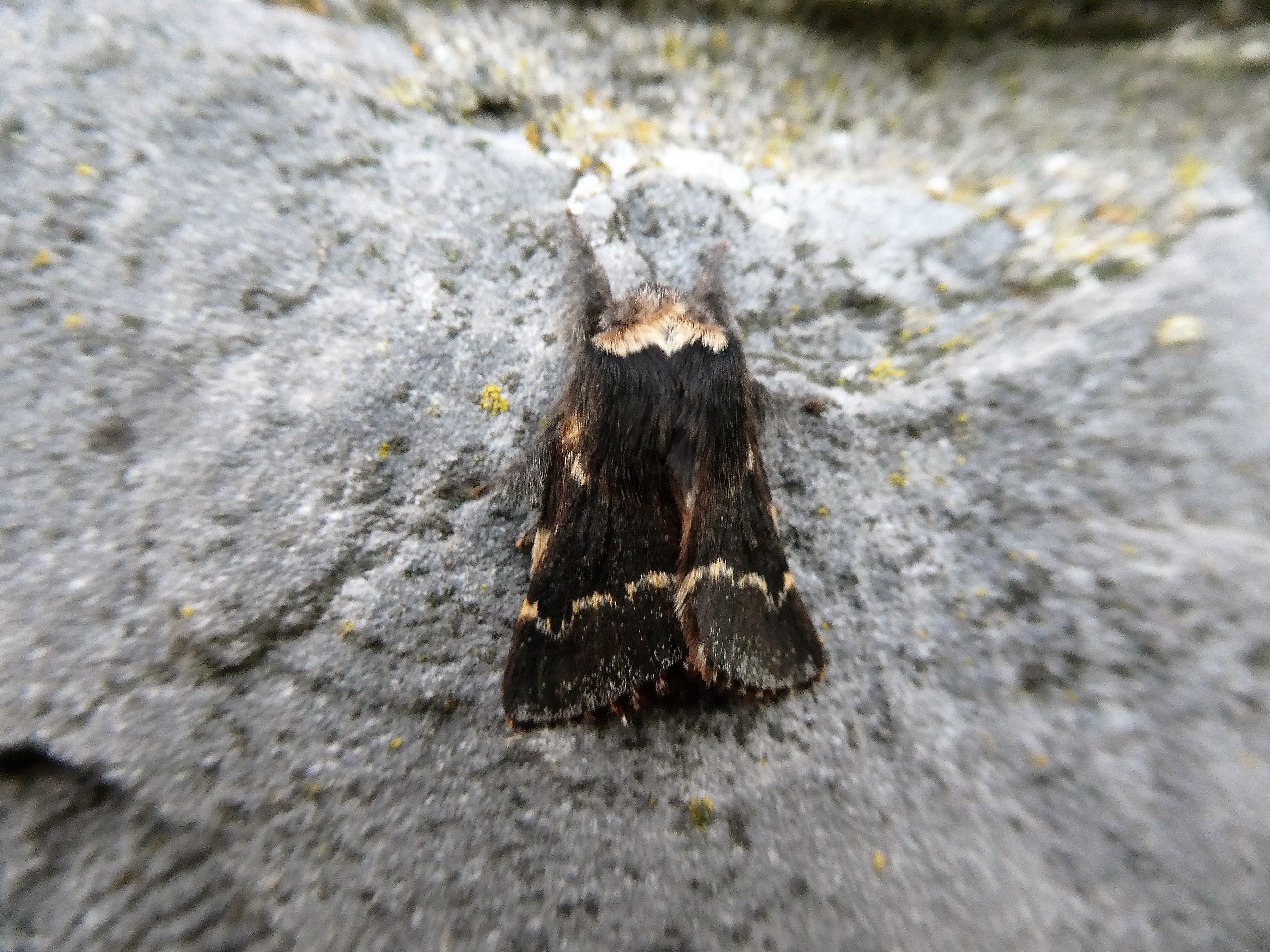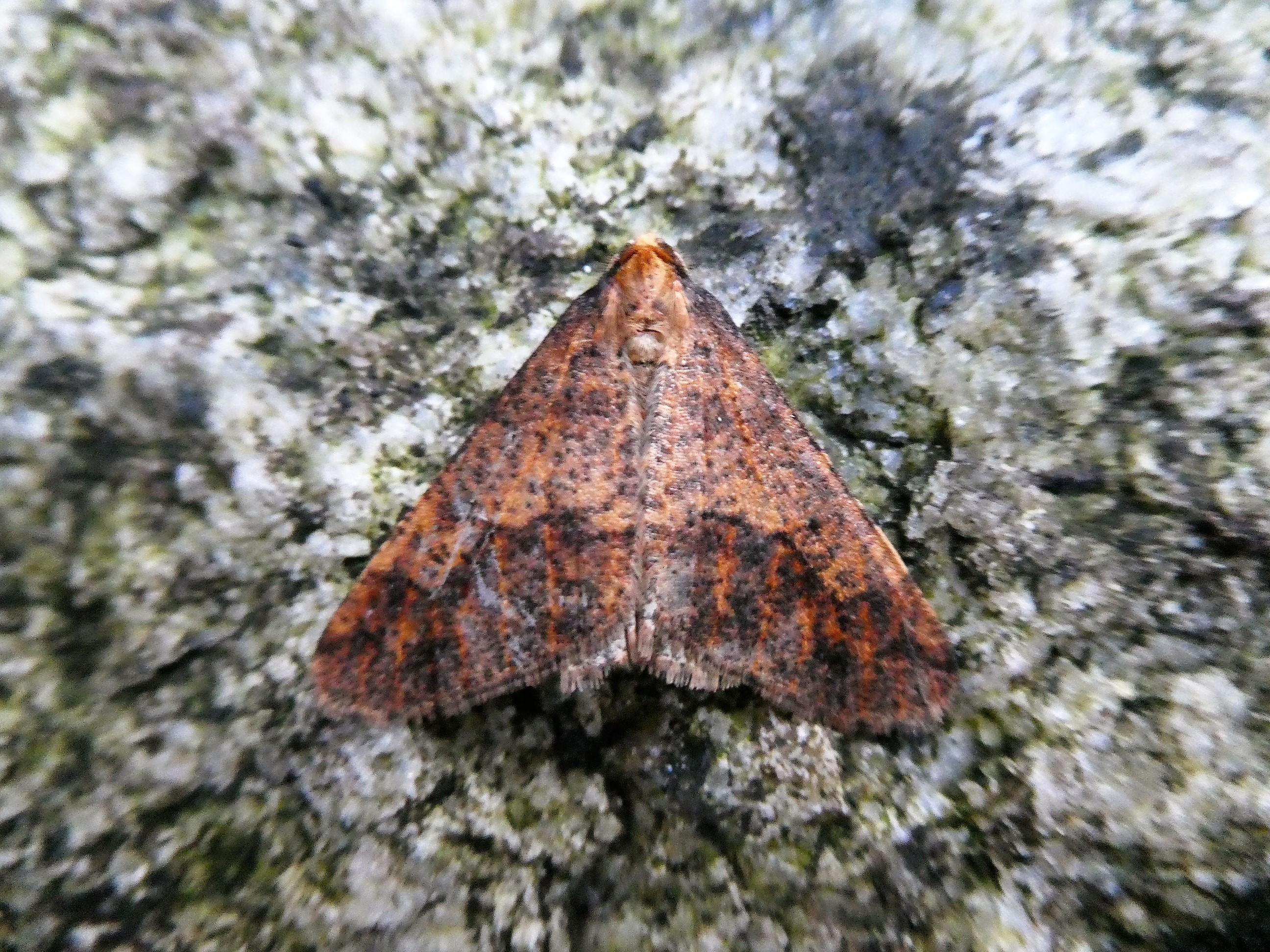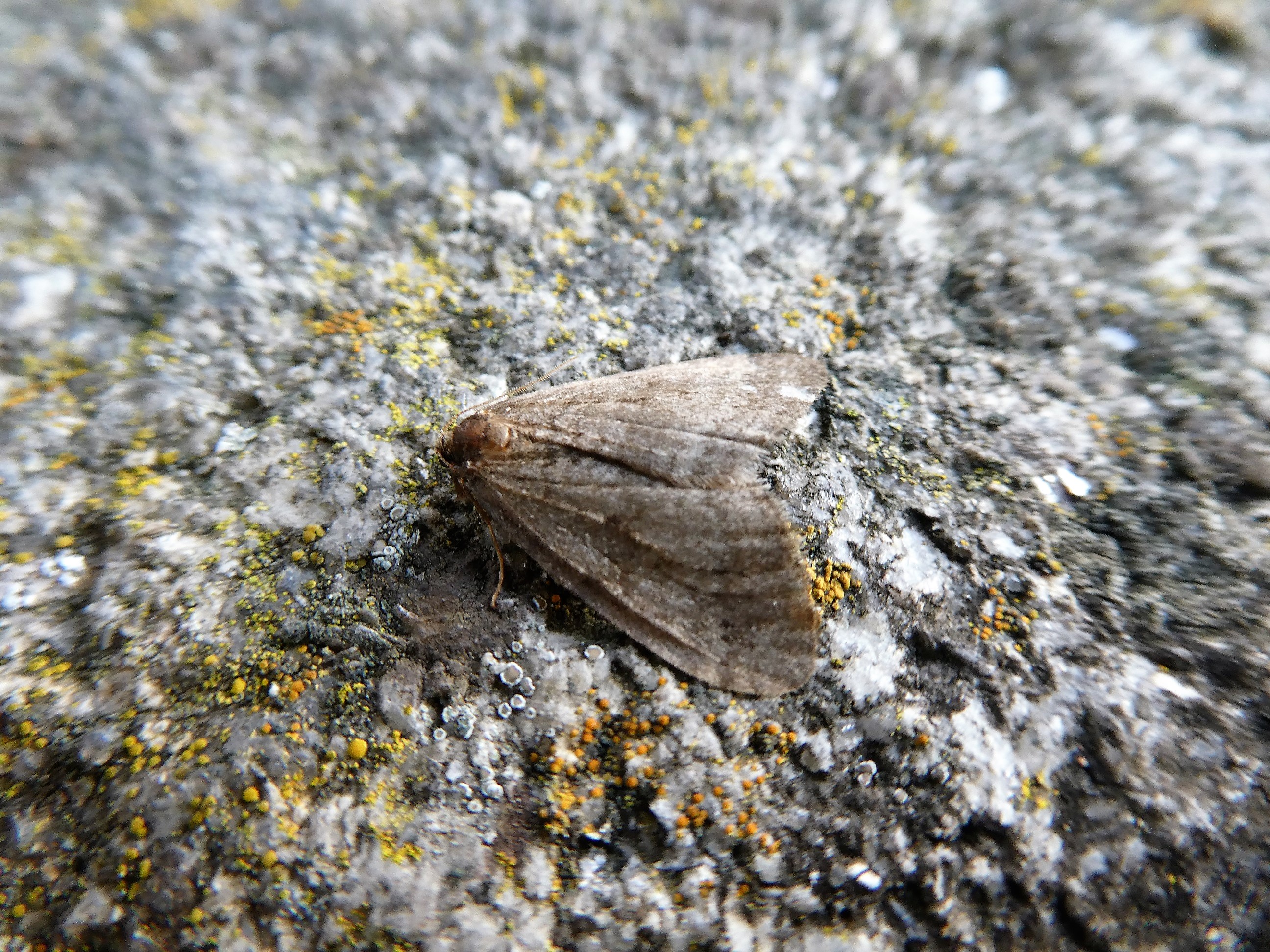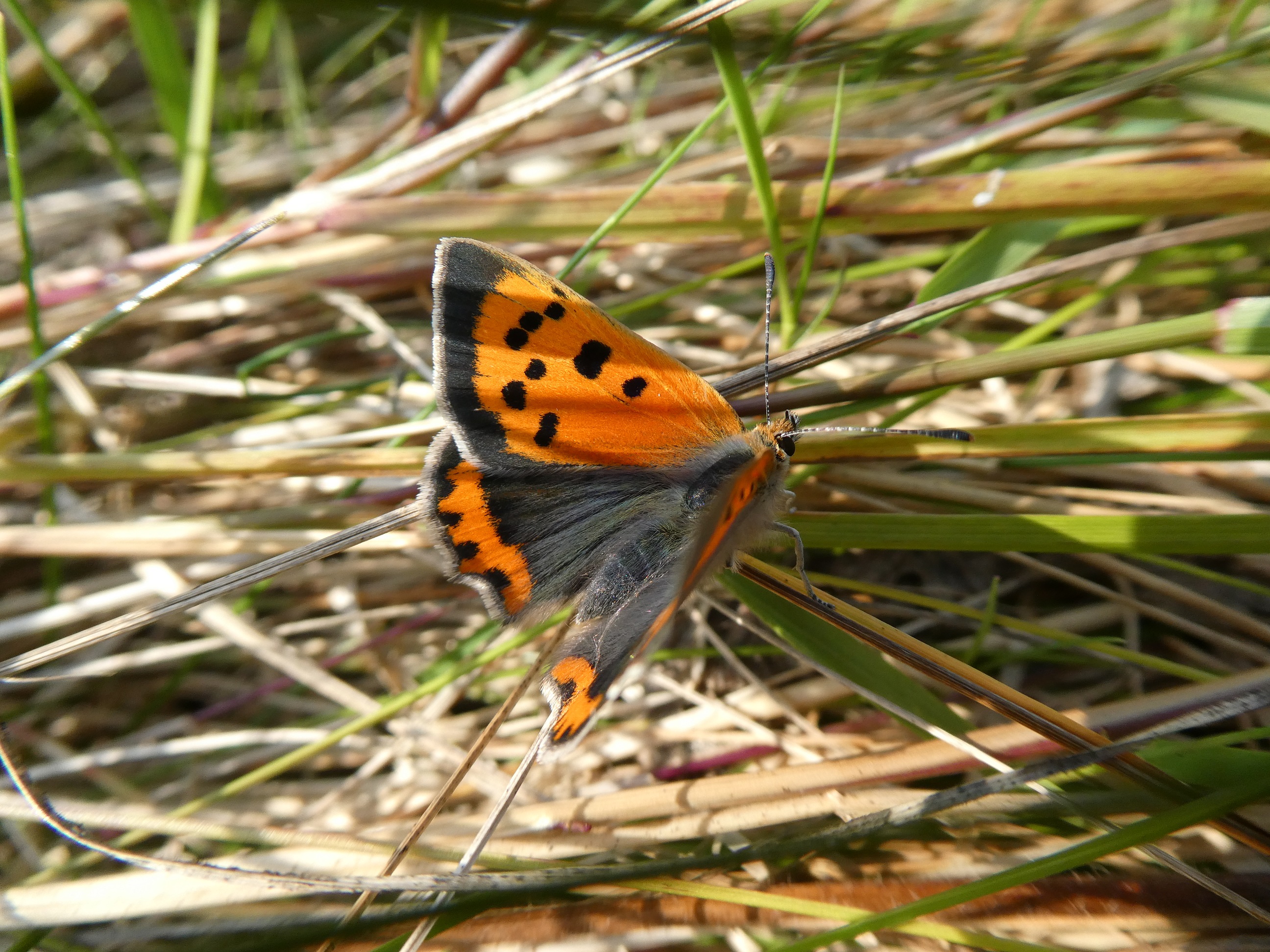Winter is a time of meagre fare for butterfly and moth lovers. Sometimes we give up on our passion altogether for this season at least and yearn for warmth’s return, for Emperor moths, Orange-tips and Holly Blues to fly from March onwards.
Yet stirring in the darkness unbeknown to most exist a few select hardy winter moths. These occasionally come to outdoor lights. All three pictured here came to my outdoor light. On milder nights these seek out mates and breeding sites. There are some benefits to flying in winter. Bats, the scourge of nocturnal moths are safely out of the way, in deep sleep. There are far fewer insect predators to trouble moths. There are fewer insectivorous birds foraging in hedges and woods in daylight hours for resting moths.
These moths do not need to place their eggs on growing leaves. All breed on native trees, placing their eggs on or close to leaf buds or on the bark. The three moths, the December Moth, Winter Moth and Mottled Umber are flying now. The females of the latter two are flightless and simply wait on our beside the cocoon from which they emerged to be located by a male. Soon she lays her batch of eggs and expires, her job done.
Their eggs will hatch in April when the buds open. These will be a great feast for breeding birds who time egg-laying and hatching in synchrony with the availability of the soft, juicy, protein-rich larvae. Enough survives to pupate in June where they will await the onset of cold weather to hatch as adults.
Although winter is a vast empty space for many butterfly lovers especially after the excitement of Christmas has passed and we feel ready for spring only for weeks more winter to cast its colour-drained pall, winter moths offer just a little consolation. Sombre as December weather, they are a fitting complement to the shadowland that is winter.



Winter Moths
Sharp winter light slants morning and afternoon
Dank vapour turns all cold blue
Short daylight and long night lonely under the moon
Little to see, less to do, fast time’s slow winter passage to rue.
But huddled close by the outdoor light
A furred, maned December moth
Braves a shivering winter night
Unmoved while light glows, a Sloth.
Fluttering before relaxing on his brightened masonry bed
A Mottled Umber, charcoal or brown on rust or cream
Blends on bark or stone, wings reflect an arrowhead
Vague and defined the impressionists’ dream.
Windows lit from inside casts the outside in darker night
Winter moth mirage, pale and plain,
A sylph of the dark yet a lover of glassy light
Like a wet birch leaf he clings to the pane.
His female patient on cocoon waits for mate and doom.


